Crafting the perfect sourdough loaf is a delicate art that calls for patience, precision, and attention to detail. Every stage of the process—whether it’s nurturing your starter or executing the final bake—has a direct impact on the flavor, texture, and appearance of your bread. Even small missteps can lead to disappointing results, turning what should be a rustic, crusty masterpiece into a dense or flat loaf.
Recognizing and correcting these errors can elevate your baking game and bring you closer to sourdough success. Here’s a look at 15 common mistakes sourdough bakers often face, along with tips to help you rise to the occasion.
1. Ignoring Room Temperature Conditions
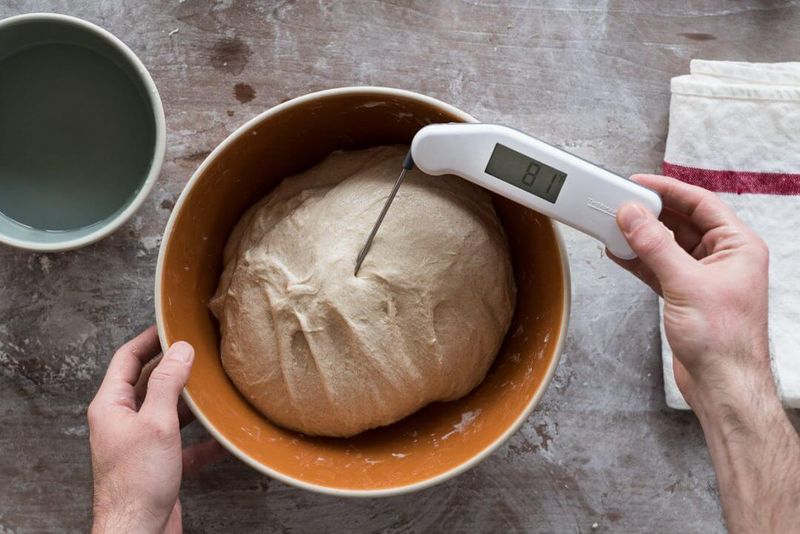
Room temperature can be a silent yet pivotal player in the sourdough baking process. If ignored, it can lead to unexpected results. Has your dough ever risen too quickly or slowly? The ambient temperature might be to blame. In warmer climates, dough may ferment too fast, while cooler environments can slow it down to a crawl.
It’s essential to monitor and adjust the temperature of your kitchen, ensuring it stays within the optimal range for fermentation. Attention to this detail can transform your loaf from mediocre to magnificent, allowing the flavors to develop perfectly.
2. Feeding Your Starter Too Infrequently
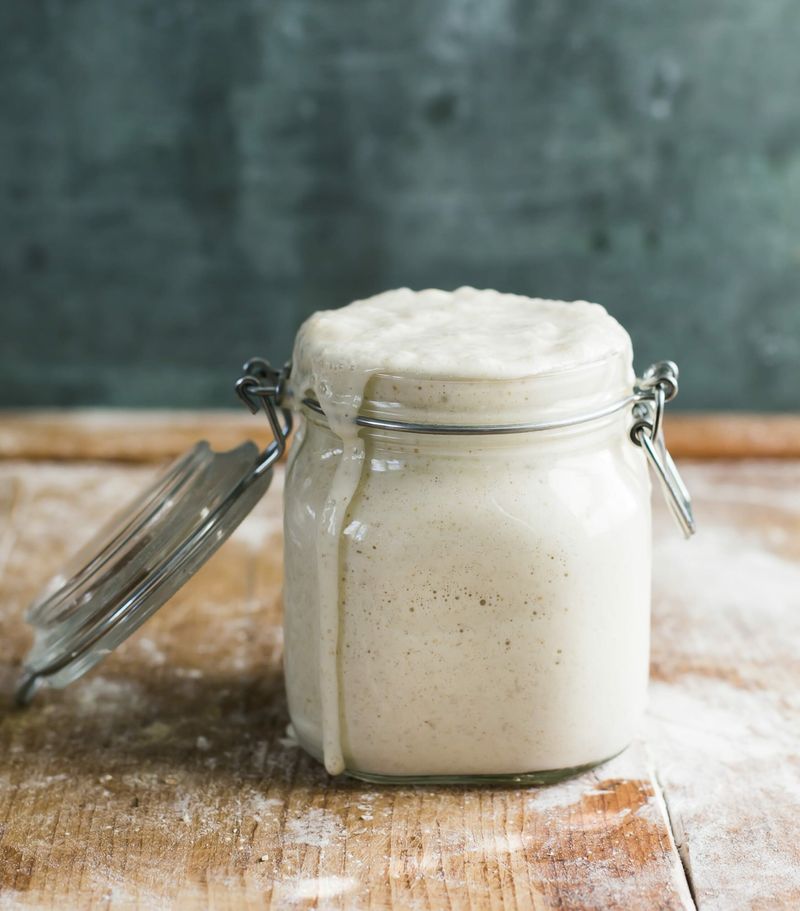
Consistency in feeding your sourdough starter is critical. Picture this: your starter is like a pet, requiring regular nourishment. Neglecting it can lead to a sluggish rise and dense crumb. Feed it daily or as needed, depending on your baking schedule.
A well-fed starter is lively, with bubbles galore, ready to impart its tangy essence to your bread. Pay attention to its needs, and it will reward you with a robust rise and delightful flavor every time. Just like a good friendship, regular care and attention make all the difference.
3. Not Waiting For The Starter To Peak
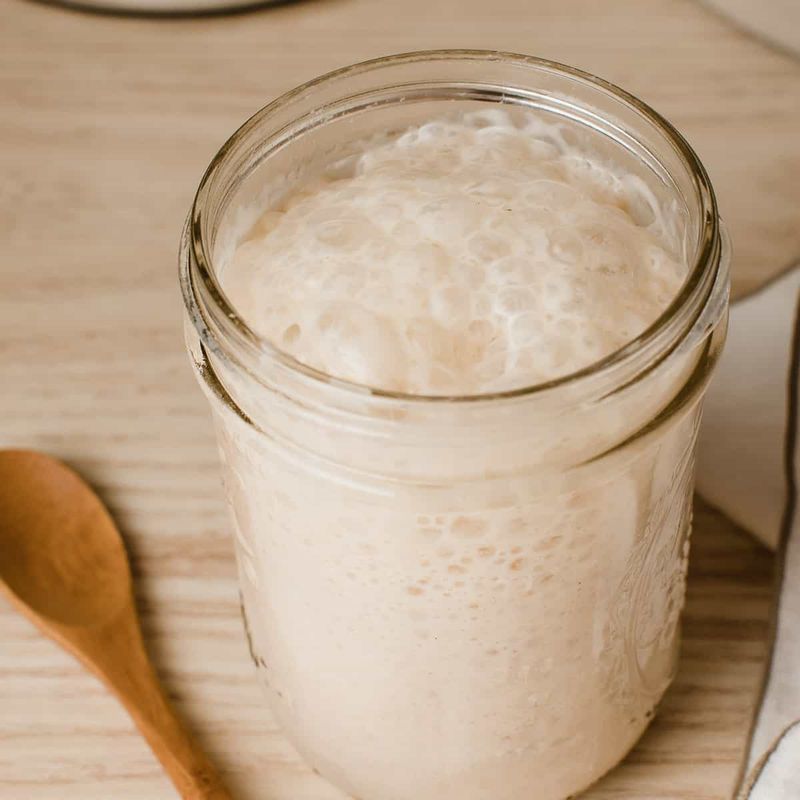
Timing is everything, especially when it comes to using your sourdough starter. Have you ever rushed the process, using the starter before it reaches its peak? This impatience can result in a lackluster rise and flavor. Waiting for the starter to peak ensures it has reached maximum activity.
It’s often marked by doubling in size, with a plethora of bubbles and a pleasant, yeasty aroma. Utilize this peak moment, and your loaf will thank you with a vibrant rise and rich taste. Remember, good things come to those who wait.
4. Using Chlorinated Tap Water
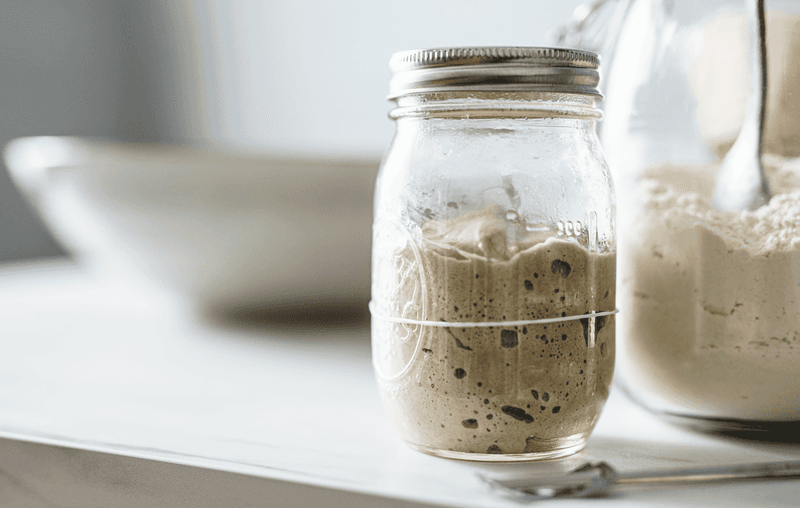
Water quality can make or break your sourdough experience. Ever wondered why your starter isn’t thriving? Chlorinated tap water might be the culprit. Chlorine can inhibit the natural yeast and bacteria, stunting the growth of your starter.
Opt for filtered or bottled water, allowing your starter to flourish. By making this simple switch, you’ll notice a more active fermentation process and a bread that’s full of life and flavor. It’s a small change with a big impact, ensuring your sourdough journey is a successful one.
5. Not Scoring The Dough Properly
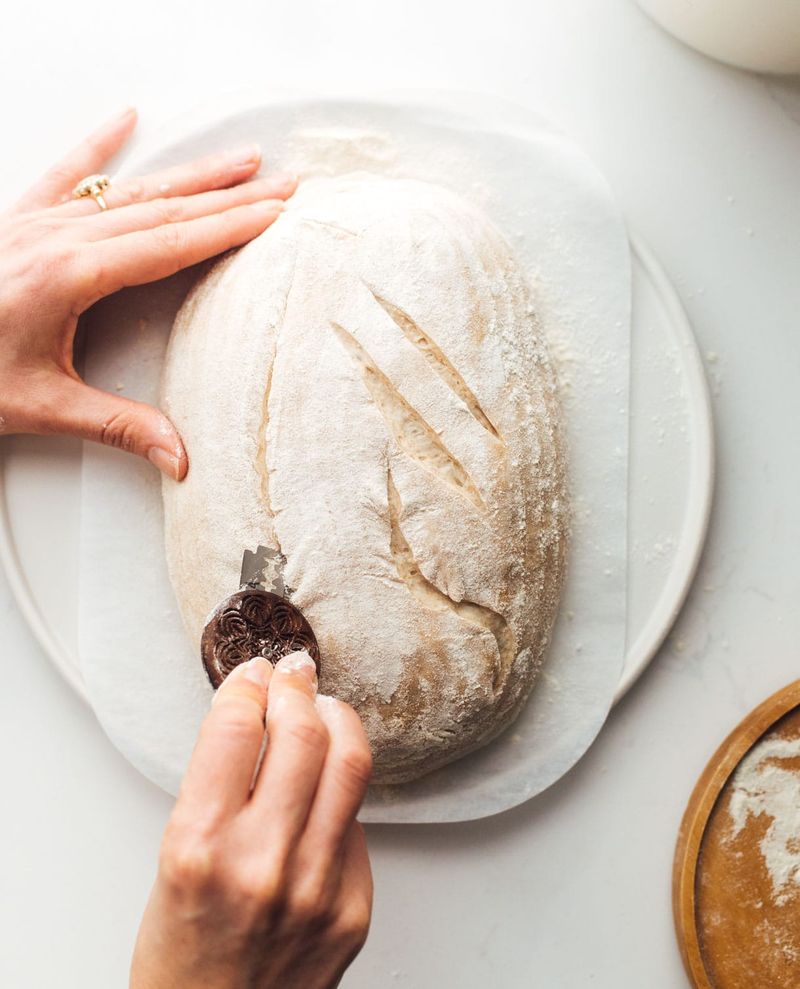
Have you ever baked a loaf that seems to burst unpredictably? Proper scoring is the key to controlling your bread’s expansion in the oven. Without it, steam builds up inside, causing uneven splits. Scoring allows the dough to expand gracefully, creating those iconic ear marks and crusty edges.
Use a sharp blade or a lame, and score with confidence. The depth, angle, and design of your score can all influence the final appearance. Mastery of scoring not only improves aesthetics but also ensures balanced baking. Let your creativity shine with each cut.
6. Skipping The Stretch And Fold

The stretch and fold technique is a hidden gem in sourdough baking, often overlooked by newcomers. This gentle method strengthens gluten and improves dough structure without heavy kneading. Imagine your dough gaining strength and elasticity with each fold, preparing it for a perfect rise.
It’s a simple process: stretch the dough, fold it over itself, and repeat. This action helps develop the crumb and crust, leading to a loaf that’s airy and tender. Embrace this technique, and watch your sourdough transform from dense to delightful.
7. Under- Or Overproofing the Dough
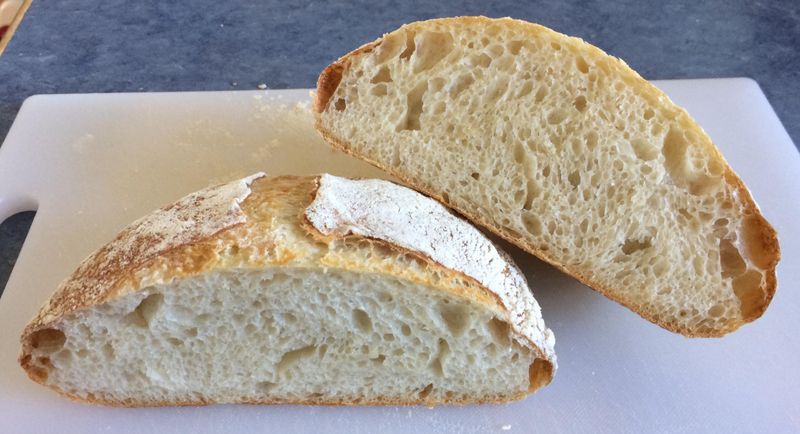
Proofing can be a delicate dance, balancing time and temperature to perfection. Ever cut into a dense loaf or one with large, irregular holes? Proofing mishaps might be the cause. Under-proofing leaves the dough tight and unyielding, while over-proofing can make it collapse in the oven.
Identifying the perfect proof involves touch and timing—slightly pressing the dough should leave a gentle indentation. Aim for that sweet spot, and you’ll achieve a loaf that’s airy and light, with a crumb that tells a story of precision and care.
8. Rushing Bulk Fermentation

Bulk fermentation is the soul phase where flavors mingle and develop. Often in a hurry, bakers might cut this step short, only to face a loaf lacking depth and complexity. Patience is key, allowing the dough to ferment until it has doubled in size, with a network of bubbles telling of its readiness.
This phase encourages the natural yeast to work its magic, creating a texture that’s both chewy and tender. Take the time to nurture your dough, and you’ll be rewarded with a bread that sings with flavor in each bite.
9. Using Too Much Flour When Shaping
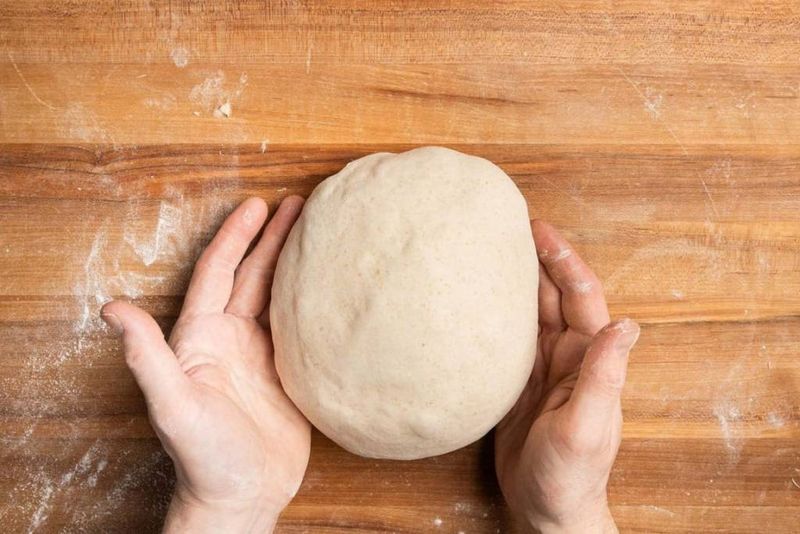
Flour is a friend, but too much can hinder the shaping process. Have you ever found your dough slipping and sliding on a cloud of flour? This excess can prevent the dough from sealing properly during shaping, leading to a loose structure. Aim for a light dusting, just enough to prevent sticking.
Allow the dough to grip the surface, creating tension as you shape it into a loaf. This technique supports a robust rise and a well-defined silhouette. With balance in mind, your sourdough’s shape will rise to the occasion.
10. Forgetting To Preheat The Dutch Oven
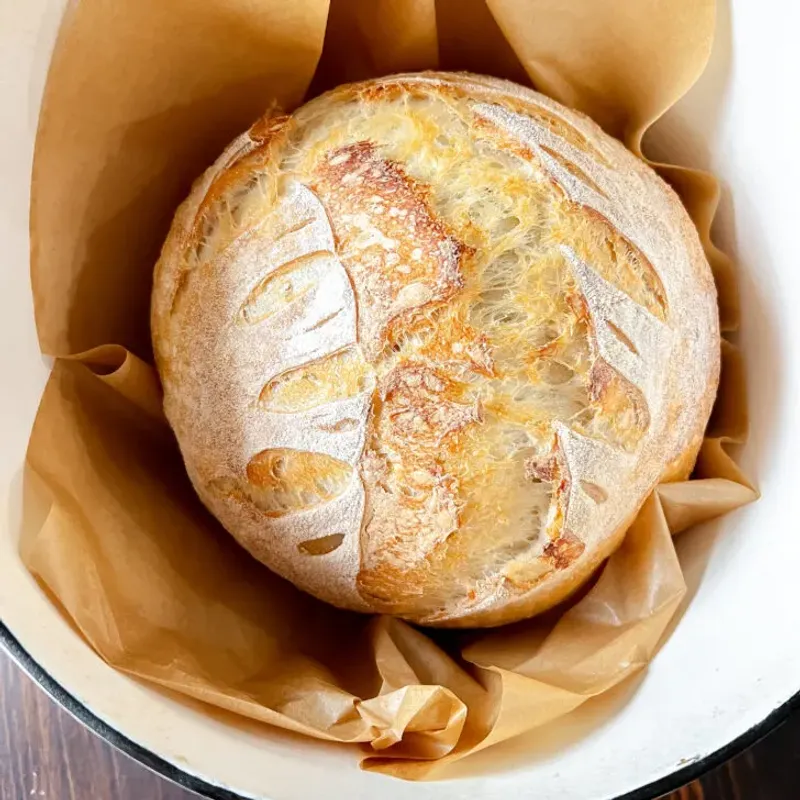
The Dutch oven is a baker’s best ally, creating the perfect environment for a sourdough loaf to thrive. Forgetting to preheat it can result in a loaf that’s unevenly baked and lacking a crackling crust. Preheating ensures the oven is at an ideal temperature to create steam, which is crucial for crust development.
Place your dough into the hot vessel, and witness the oven spring to life. This step ensures your sourdough emerges with a crust that’s both crisp and golden, capturing the essence of artisanal baking.
11. Baking At The Wrong Temperature
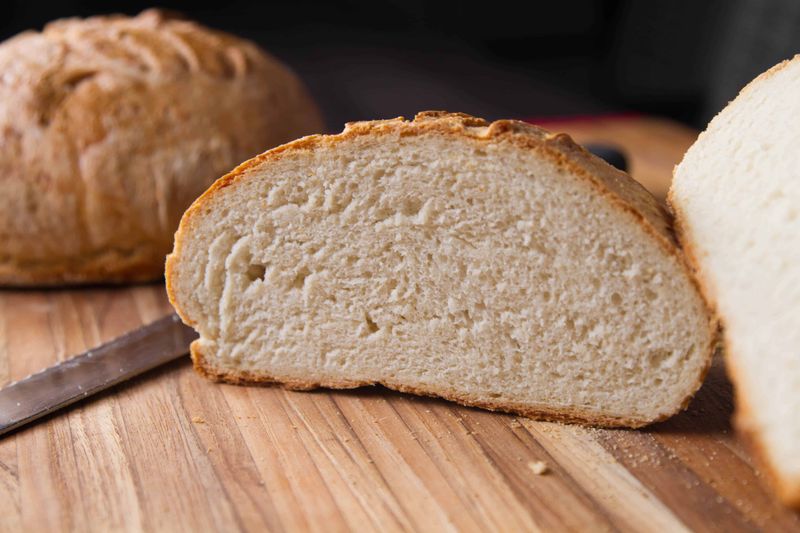
Temperature plays a starring role in the baking process, influencing the final texture and crust of your loaf. Baking at an incorrect temperature, either too high or too low, can sabotage your efforts. Too hot, and the crust forms too quickly, leaving the interior undercooked.
Too cool, and the loaf might not rise as expected, resulting in a dense crumb. An oven thermometer is your guide to precision. Adjust to the specified temperature for your recipe, ensuring a bake that’s harmonious and satisfying in every slice.
12. Baking With Cold Dough
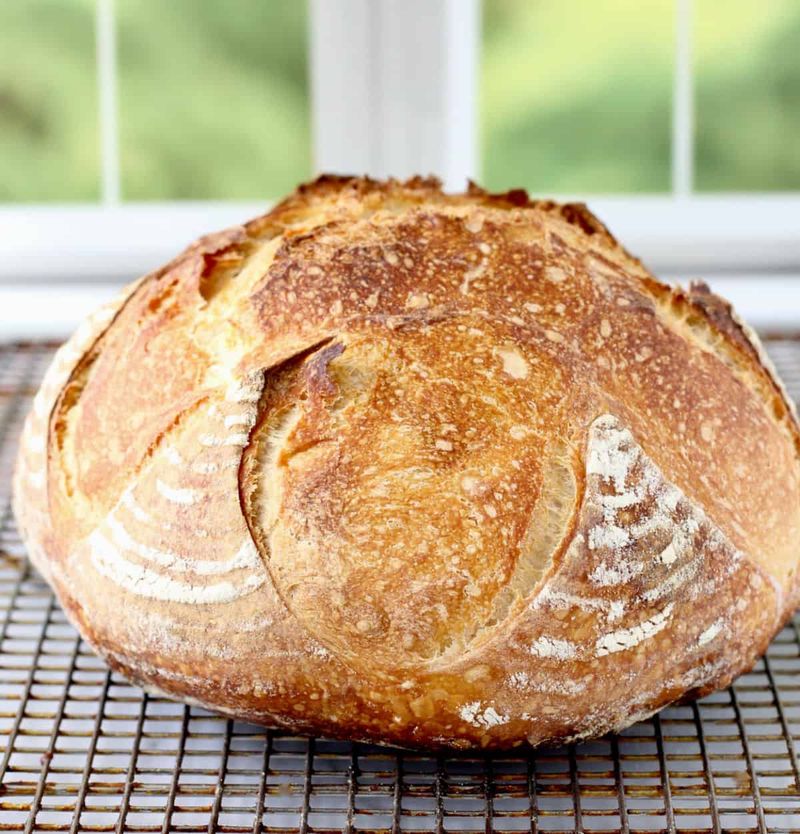
Cold dough straight from the fridge can be a surprise culprit in uneven baking. Have you noticed parts of your loaf still gooey while others are perfectly baked? Allow your dough to come to room temperature before baking. This ensures even heat distribution and a consistent rise.
The wait is worth it, as the dough’s warmth allows the yeast to work its magic, leading to a loaf that’s uniformly airy and beautifully browned. Embrace this patience, and your sourdough will reward you with a texture that’s flawless and inviting.
13. Not Keeping A Baking Journal
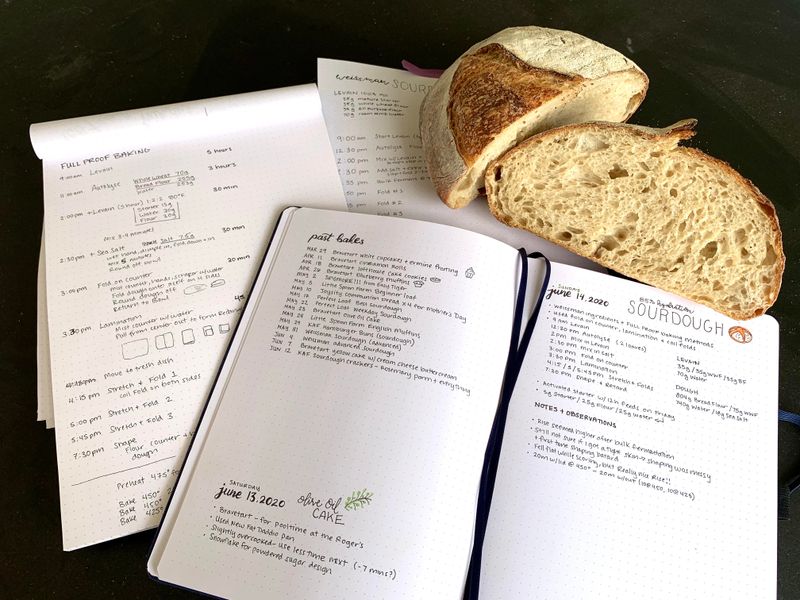
A baking journal can be a baker’s secret weapon, a place to capture successes and lessons learned. Ever repeated a mistake or forgotten a winning formula? Documenting each bake, noting specifics like hydration levels and fermentation times, can unveil patterns and insights.
With each entry, you build a personalized guide to sourdough mastery. It’s a creative space to experiment and refine, turning every bake into a learning opportunity. Keep track of your journey, and watch your loaves evolve into masterpieces of flavor and form.
14. Cutting The Bread Too Soon

The aroma of freshly baked sourdough can be tantalizing, but patience pays off. Cutting into your bread too soon can lead to a gummy texture, as the internal moisture hasn’t settled. Allowing your loaf to cool completely ensures the crumb sets and flavors develop fully.
This wait might be the hardest part, but it’s crucial for a satisfying bread experience. Once cooled, your knife will glide through with ease, revealing a crumb that’s airy and well-structured. Hold off the eagerness, and your patience will be rewarded with perfection.
15. Giving Up After One Bad Loaf
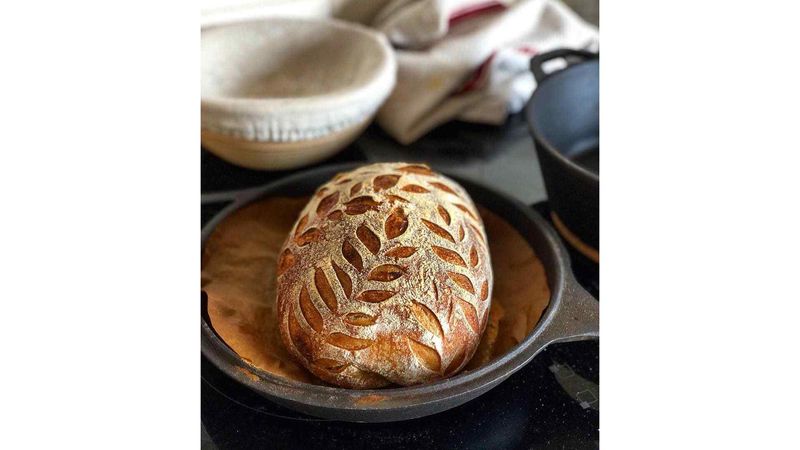
Every baker faces the inevitable flop, but resilience is your greatest tool. Have you felt discouraged by a dense or misshapen loaf? Remember, each mistake is a stepping stone to improvement. Analyze what went wrong and approach the next bake with newfound wisdom.
Sourdough baking is a journey of trial and error, with each loaf offering its own lessons. Embrace the learning curve, and you’ll find that persistence leads to discovery and triumph. Don’t let one bad loaf deter you; your masterpiece awaits with practice and patience.
Leave a comment